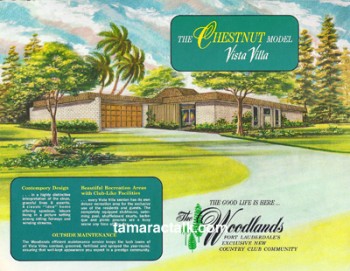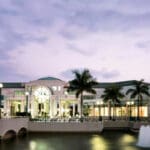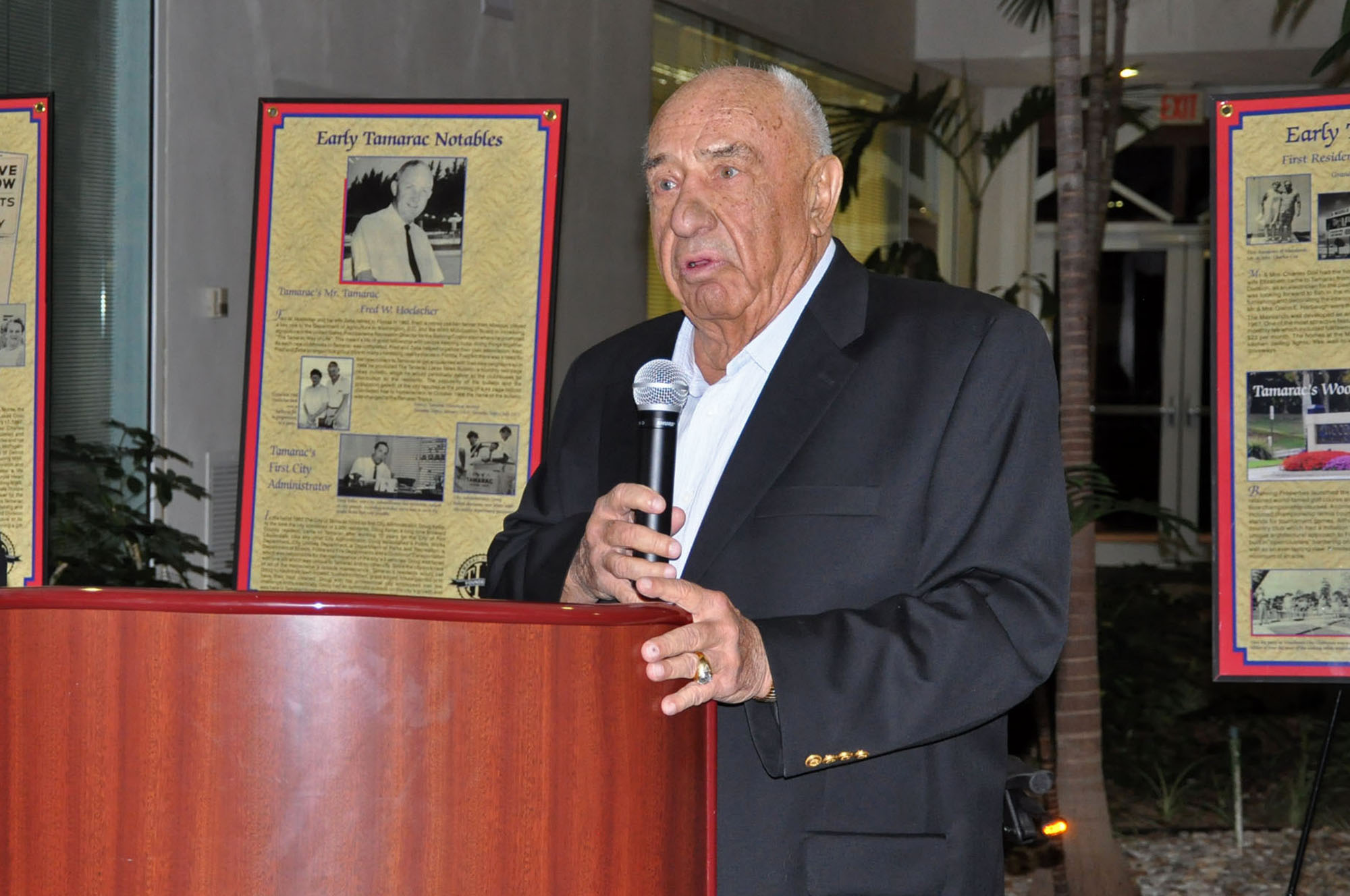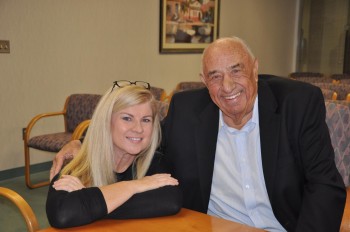By: Sharon Aron Baron
Back in 2012, the City of Tamarac invited its founder and former developer Kenneth Behring to their 50th Anniversary gathering where the mayor and commission greeted him along with many of the residents that remembered him back from the days when he lived in their community.
I was able to sit down with Behring and ask him about the early days of Tamarac and fortunately I recorded it because I didn’t want to miss a thing.
In 1956, at the age of 28, Behring moved to Fort Lauderdale and started the Behring Construction Company. Growing up poor in Wisconsin, he first earned money delivering newspapers, cutting lawns, caddying, and as a teenager, working in a lumberyard and a retail store. After high school, Behring sold used cars and eventually opened his own new and used car dealerships. He was a millionaire at age 27 after moving to Florida to begin a second career as a real estate developer.
Tamarac was named after a country club in Oakland Park called the Tamarac Country Club. What may have confused many people over the years, was that the owners of the club owned a car wash business up north called CarMat. That’s how they got their name. It didn’t have anything to do with Behring and Behring didn’t name the city after car washes spelled backwards as many people tend to believe.
Behring described the vast open spaces of land back then.
“If you’d been here at that time, there was nothing out here, there was this country club, and that was about the only thing.”

Brochure for the “Chestnut” model featured in the Vista Villas Section of the Woodlands Country Club
Behring was instrumental in adding an interchange connecting his new land west of the Sunshine State Parkway, now known as the Florida Turnpike, to the buyers of his new homes. Before 1971, the only way across was through a tunnel which only fit one car at a time.
Behring petitioned the Turnpike Authority to add the interchange at Commercial Boulevard and ultimately had to deed 27.5 acres of prime real estate that was valued at over $1 million to get it. It opened in November of 1971.
Behring helped build Tamarac Lakes, but his largest communities were the Mainlands – where homes started at $8,900, and the Woodlands Country Club – where homes started at $20,000.
Behring lived in The Woodlands for several years with his wife and his children. His custom home still stands today off of Woodlands Boulevard. It now has a gate in front of it, something his son Jeffrey Behring, who lived there as a teenager, said it didn’t have while he was growing up.
The clubhouses in the communities were very busy during those days, and bingo night was a big night.
“My mother got into going to bingo,” said Behring. “We knew if it was Thursday because every Thursday night I’d call her and say, ‘Will you come over for dinner?’”
‘“Well, I’m tired tonight,’” she’d say, and we knew she was going to bingo.”
Behring moved to California in 1972 where he would develop the Blackhawk development near San Francisco. He said if he had stayed in Tamarac, he would have continued building single-family homes. “I still think that (it)was the finest living that people from the north could get at that time.”
Behring enjoys looking back, not only on the homes that he built but on the relationships that he created by bringing people together. He describes his communities as “…a place where they could communicate with people that all had the same problems. But they became friends. They all had the same interests.”
“I remember every New Years Eve,” he said, laughing. “I would go to all of the clubhouses. We would have fun. Each would have their own band, and I’d walk in, and they’d play ‘Hail to the Chief.'”
“They were the nicest, most wonderful people that I’ve ever met in my life.”
Before meeting with the commission and residents to give a speech, Behring reminisced about the many friends he met while living here and the work that he did as a developer.
“I’m more proud, I think, of what we did here in the beginning [than] of anything I’ve done in my life. I think I made more people happy. We gave them an opportunity at a great price, to have something at that time, which was paradise. They could come and go as they wanted.”
So what has Behring been doing since his days after building Blackhawk in California? Besides owning and selling the Seattle Seahawks football team, Behring contributed $20 million to the Smithsonian Museum of Natural History in 1997, and in 2000 Behring contributed an additional $80 million to rebuild the Smithsonian’s National Museum of American History.
More importantly, during his years of travel, Behring has made it his personal mission to help those in need. His donations of food, medical supplies, clothing, toys, and educational materials have helped people in some of the most impoverished nations on earth. Not one to just sit back at his desk, his first-hand involvement throughout the years has given him a realistic picture of how much help is needed.
Behring founded the Wheelchair Foundation in 2000, since then, more than 1,011,892 adults, teens and children in 153 countries in need and have been changed.
Behring is 87 years old now, and his son David Behring is the President of the Wheelchair Foundation. I hear that occasionally he still visits South Florida.
Author Profile

Latest entries
 EventsDecember 15, 2024Celebrate the Holidays with The Nutcracker Ballet in Sunrise
EventsDecember 15, 2024Celebrate the Holidays with The Nutcracker Ballet in Sunrise NewsDecember 14, 2024Gentle Dog and Shy Kitten Seek Loving Forever Homes at Broward County Humane Society
NewsDecember 14, 2024Gentle Dog and Shy Kitten Seek Loving Forever Homes at Broward County Humane Society EventsDecember 13, 2024Broward College Small Business Boot Camp Now Accepting Registrations
EventsDecember 13, 2024Broward College Small Business Boot Camp Now Accepting Registrations EventsDecember 13, 2024Two Takes on Torah as Orthodox Rabbi and Reform Journalist Spark Debate in Tamarac
EventsDecember 13, 2024Two Takes on Torah as Orthodox Rabbi and Reform Journalist Spark Debate in Tamarac









